Different smokes for different folks
By Mike Cohen
Most New Jerseyans live in “smoke-free” homes. That may change soon, but probably not the way you’d think. While the typical backyard cooking set-up includes a grill and possibly a barbecue, relatively few have incorporated a smoker. Smoked meats are nothing new, of course, but recently they are showing up on the menus of some of the region’s top restaurants. Chefs are paying top dollar for artisanal smoked meat, fish and poultry (and passing that cost along to their patrons); some have even assembled their own smoking operations on-site or nearby.

www.istockphoto.com
So how hard can it be for an average homeowner to add a smoker to the mix? Unlike grills and barbecues, which are fairly simple to operate, smokers can be somewhat counterintuitive. Before burning rubber to Home Depot or Lowe’s to get your new gear, it’s important to understand and respect the process. Unlike grilling (which involves direct, high heat from start to finish) and barbecuing (lower temperature and longer cook time), smoking is essentially the process of “preserving” food with a low temperature while adding salt and smoke. The smoke infuses flavor, while the salt pulls water out of the meat.
HOT VS. COLD
Most of the smokers on the market are “hot” smokers. They operate at a temperature of 160° or higher and are aimed at backyard chefs who want their food done relatively quickly. This type of smoking doesn’t really preserve the meat, as there isn’t enough time for the moisture to be removed. The pros tend to go for “cold” smokers, which involve a little more pre-planning and patience. The results are well worth it.
Cold smoking typically is a two-step process. Salt is added to remove excess moisture and then the food is subjected to a long, slow smoking process. It involves cooking below 86°F for up to 32 hours. The heat source is kept away from the product and the smoke is pipped in. Some of the newer smokers can be dialed down to work this way. Both methods of smoking brown the meat, as amino acids in the food interact with some reduced sugars to produce the desired color. To create that “smoke ring,” nitric oxide from burning wood combines with the myoglobin in the meat to penetrate a centimeter or so in from the surface. You won’t see a smoke ring if meat is cooked in an oven.
Smoking is more than just heat and smoke. There are essentials to consider, such as sugar and salt for curing and brining, which add just the right combinations of sweet, sour and bitter flavors to your meal.
Curing your protein before smoking helps remove moisture and stop the formation of harmful bacteria (that’s a good thing) and will also enhance the flavor (that’s a better thing).
 Brining meat in a mixture of water, salt and perhaps spices and herbs, dramatically impacts the flavor profile. There are many rules about brining, but a simplistic rule is 1 hour of brining for every 2 pounds of product.
Brining meat in a mixture of water, salt and perhaps spices and herbs, dramatically impacts the flavor profile. There are many rules about brining, but a simplistic rule is 1 hour of brining for every 2 pounds of product.
 For those who have medical concerns about sodium, there is another option. You can salt your meat prior to smoking. A mix of salt and pepper, herbs, sugar and honey can be rubbed over your food anywhere from 2 to 24 hours beforehand (which needs to be removed before it goes in the smoker). The idea is to draw out the moisture without the BP bump. Whichever method you prefer, the purpose of salting is the same: less moisture actually allows for a better absorption of the smoky flavor.
For those who have medical concerns about sodium, there is another option. You can salt your meat prior to smoking. A mix of salt and pepper, herbs, sugar and honey can be rubbed over your food anywhere from 2 to 24 hours beforehand (which needs to be removed before it goes in the smoker). The idea is to draw out the moisture without the BP bump. Whichever method you prefer, the purpose of salting is the same: less moisture actually allows for a better absorption of the smoky flavor.
Not to be excluded from the conversation is marinating. Mixing spices, oils, vinegars and even citrus to meals both flavors and tenderizes your final product. Some marinades work best before smoking, while others work best after smoking and right before eating. Meats do particularly well with marinades, which can be as simple as applying Worcestershire sauce just before smoking. Technically, dry rub is a type of marinade. This spice and salt mixture, worked into the food prior to cooking, seals in flavor and softens the texture. This is a tad more subtle and delicate than salting, so get a feel for your particular taste-bud tantalizers before rubbing this all over your Whole Foods purchase. Finally, just for the record, air-drying your meat is another option. This will surely impress your guests, but your neighbors may wonder what the heck you’re up to when they peek over the fence the day before.
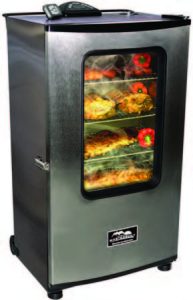 KNOW YOUR SMOKER
KNOW YOUR SMOKER
Not everyone is ready to do battle on a basic-cable barbecue throwdown, so it’s good to know which smoker best suits your lifestyle and circumstance before handing over your credit card or clicking the BUY button. Compact, stainless steel electric smokers, for example, tend to be economical and fairly mobile. Two popular brands are Southern Country Smokers and Masterbuilt (immediate right). They can cook food fairly quickly if that’s a priority—say, if your Thanksgiving guests are waiting for that smoked turkey to hit the table.
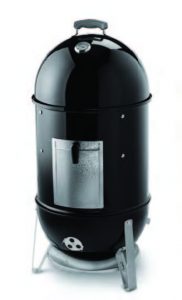 Kettle smokers (aka hinged-lid cookers) are the ones you often encounter at home improvement and hardware stores. Weber makes a popular model I see everywhere. This type of smoker (far right) also can double as an oven for larger pieces of meat or poultry. This is your basic charcoal- or gas- fired smoker that uses wood chips to create the smoke. Soaking your chips, or a portion of your chips, prior to burning will produce a longer, slower burn time—a critical component to backyard smoking success. In this variety of smoker, consider placing a water tray alongside your meal to prevent your food from drying out.
Kettle smokers (aka hinged-lid cookers) are the ones you often encounter at home improvement and hardware stores. Weber makes a popular model I see everywhere. This type of smoker (far right) also can double as an oven for larger pieces of meat or poultry. This is your basic charcoal- or gas- fired smoker that uses wood chips to create the smoke. Soaking your chips, or a portion of your chips, prior to burning will produce a longer, slower burn time—a critical component to backyard smoking success. In this variety of smoker, consider placing a water tray alongside your meal to prevent your food from drying out.
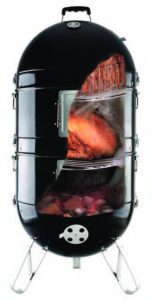 One caveat is that kettle smokers are not good for guys I call “Larry the Lifter”—who can’t resist taking periodic peeks at the meat. Every time you open the lid, all the smoke that’s supposed to go into the food goes into the air. It adds about 10 minutes per lift to your cook time.
One caveat is that kettle smokers are not good for guys I call “Larry the Lifter”—who can’t resist taking periodic peeks at the meat. Every time you open the lid, all the smoke that’s supposed to go into the food goes into the air. It adds about 10 minutes per lift to your cook time.
Cold smokers make up a wide-open category that includes everything from purchased products to funky homemade devices. Their advantage is that it enables you to smoke a large variety of meats at the same time, or accommodate large cuts, and food can be smoked subtly and over a long period of time, which allows the smoke to penetrate without overpowering. The ProQ from Mac’s BBQ (left) is a good model, as it allows you to set up a heat source that can be monitored by way of a built-in temperature gauge. It also doubles as a water smoker. Water smokers are ideal for lean products, such as rabbit or quail, as well as soft and delicate fish.
 For those who need to get their smoke on 12 months a year, gas smokers are the way to go. They offer hot and cold smoking with racking and hanging capacity. Easy to move and carry, they can be placed anywhere in the backyard, as long as they are far enough away from objects that you don’t want to sacrifice to the barbecue gods. Make sure there is plenty of ventilation around all sides of the smoker. The propane unit from Camp Chef (above) is a popular example of a gas smoker. Its temperature gauge enables you to switch between hot or cold smoking by dialing in the right temperature. Another benefit is not having to worry about overcooking or drying out the food, as you can control this like an oven.
For those who need to get their smoke on 12 months a year, gas smokers are the way to go. They offer hot and cold smoking with racking and hanging capacity. Easy to move and carry, they can be placed anywhere in the backyard, as long as they are far enough away from objects that you don’t want to sacrifice to the barbecue gods. Make sure there is plenty of ventilation around all sides of the smoker. The propane unit from Camp Chef (above) is a popular example of a gas smoker. Its temperature gauge enables you to switch between hot or cold smoking by dialing in the right temperature. Another benefit is not having to worry about overcooking or drying out the food, as you can control this like an oven.
TOASTING THE CHEF
In the prophetic words of Eagles guitarist Joe Walsh, “The smoker you drink, the player you get.” I’m still not sure what he meant, but I can say with some authority that what you pair with smoked meats can dramatically enhance the experience. Chardonnays are quite the standard around backyard get-togethers, which is fine, but consider taking things a little farther. Get some advice on a barrel-aged gem from Napa or Sonoma that will match with the woody undertones of your meal—one that has a little malolactic fermentation will also add some buttery notes to soften the bitters of the smoke. Look for Far Niente, Cakebread, Frank Family and Neyers. Champagne-wise, the Blanc de Blancs are all chardonnay with the best coming from Cote des Blancs.
If you favor reds, resist the temptation to bring out the monster cab; with all the smoke in the air, the rich fruits may clash with your meal. Syrah from the Rhone Valley in France, with its characteristic pepper aroma leading you into the spice corridor is absolutely stunning with smoked meats. Think of JL Chave, Paul Jaboulet or Chapoutier for your selections. Washington State makes killer syrahs, even better than their cabernets, but don’t tell anyone— it’s the sommelier’s secret. Dunham Cellars, Gramercy Cellars, and Reininger come to mind as superb syrahs for your feast.
Zinfandel usually makes an appearance at most barbecue events and for good reason. Sweet raspberry with some spice hits the spot when taking down some smoke. Napa offers some real value, believe it or not. Consider Elyse, Summers and Chase as brands to trust without breaking the bank. Russian River and it’s cool climate seems to me to be the perfect spot for zin. Check out Williams Selyem or Joseph Swan.
 Finally, if you have doctored up your smoky creation with a fiery rub and added some chilis to the wood, the great fill here is one of those fabulous sweet German Rieslings. Sugar puts out the fire, alcohol does not—it makes it worse—so do not grab that high alcohol content wine you think will pair power with power. Grab the good stuff from St. Urbans Hof or JJ Prum.
Finally, if you have doctored up your smoky creation with a fiery rub and added some chilis to the wood, the great fill here is one of those fabulous sweet German Rieslings. Sugar puts out the fire, alcohol does not—it makes it worse—so do not grab that high alcohol content wine you think will pair power with power. Grab the good stuff from St. Urbans Hof or JJ Prum.
INTO THE WOOD
Wood chips for the accomplished smoker are available just about everywhere. So too are wood pellets, but do your research as some pellets use binders, which is not good because binders can influence the food in a bad way. A safe way to ensure you are getting the good stuff?Go to your local lumber yard and ask for some sawdust. It’s cheap and effective. If you want to get adventurous:
Alder Wood Delicate and good for smoking fish—pork, poultry and game birds, too
Almond Sweet and nutty taste that goes with all meats
Apple Wood Sweet and fruity taste that works best with poultry, ham, beef and game
Cherry Wood Mild, sweet and very fruity—ideal for poultry, fish and ham
Grape Vines Aromatic and excellent with all meats
Hickory Best known and most widely distributed—very pungent and good for bacon and other dense meat products
Maple Wood Light and sweet taste, best for poultry and ham
Mesquite Expensive and also quite intense, as it burns very hot—best to mix with lighter woods as it can be a little bitter
Oak Strong flavor that’s good for longer smoking times, including brisket and thick cuts of meat
Walnut Heavy smoking wood that can often be mixed with other lighter woods—perfect with stronger red meats and game
SPICE, GIRL
Prepping your meat for smoking almost never requires a special trip to the grocery store. Most of these spices are already in your kitchen cabinet…
Allspice That nutmeg, cinnamon and clove aroma is perfect for brining and also for rubs
Aniseed Sublime with seafood and game meats
Basil Pungent and sweet—reserved for lamb, tomatoes and chicken
Bay Leaf Can be added to your smoking woods Caraway Peppery and perfect when making sausages
Cardamom Lemony and slightly bitter—perfect with salmon and brines
Chervil Fragrant and delicate, so use it with seafood and white meats only
Chili Add to your smoking chips—sparingly
Cilantro Sweet with some sandalwood notes and perfect with brines and rubs
Cumin Strong, so best in marinades
Dill Sharp, fragrant and sweet—where would our salmon be without it?
Fennel Anise flavor that is perfect with chicken and vegetables
Ginger Hot and pungent—works best with chicken and fish
Juniper Sweet and aromatic, ideal for brining veal
Lemongrass Mix it with your wood for seafood and white meats
Mint Refreshing when rubbed or brined with lamb and vegetables
Mustard Seed Use it whole in brines and rubs Oregano Spicy and sweet for seafood and light meats Paprika Sweet and peppery—produces a smoky taste
Rosemary Great to place atop the smoking wood or into brines
Sage Pungent and best with chicken, venison and mushrooms
Tarragon Very flavorful and palate-cleansing to mix with game and strong seafood
Thyme Perfect with lamb, beef, pork and sausage

 BEER ME
BEER ME
Sometimes, that big slab of smoking beef deserves nothing less (or more) than a great beer. The rule of thumb is drink what you like, but if you are interested in tracking down some special suds, try Full Sail Session Black beer. Dark but deceptively light, with flavors of chocolate and roasted malts, it cuts through the fat like a hot knife through butter. With Texas-style brisket it is a jammer!
Got a leg of lamb going? Try Ommegang Abbey Ale from across the river in NYC. It’s high in alcohol but you won’t taste it, as the richness of the lamb will dumb it down. For all those fowl folks, a lighter quaff such as Saison Dupont from Belgium works. Its lively citrus and light carbonation with some pepper will clean your palate quite nicely, thank you.
Last but not least is pork, the stock in trade of all smokers and backyard grillers. Go with a smoky porter. Stone Brewery makes Stone Smoked Porter (right). A peat-smoked malt with the backbone you are looking for…along with a little coffee and chocolate!


 Is It True You Should Hold Your Breath in an Avalanche?
Is It True You Should Hold Your Breath in an Avalanche?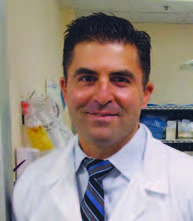







 BREAKTHROUGH: FEMALE INCONTINENCE
BREAKTHROUGH: FEMALE INCONTINENCE BREAKTHROUGH: PACS
BREAKTHROUGH: PACS ON THE HORIZON
ON THE HORIZON



 “From what we first imagined, we achieved 85 to 90 percent of our initial vision,” James estimates, adding that although the goal of a designer is to marry form and function, sometimes one must be sacrificed for the other. “That’s how I come up with 85 to 90. We chose some details that are aesthetically pleasing but not very functional. However, in terms of what we wanted the house to be, we achieved.”
“From what we first imagined, we achieved 85 to 90 percent of our initial vision,” James estimates, adding that although the goal of a designer is to marry form and function, sometimes one must be sacrificed for the other. “That’s how I come up with 85 to 90. We chose some details that are aesthetically pleasing but not very functional. However, in terms of what we wanted the house to be, we achieved.”

 Brining meat in a mixture of water, salt and perhaps spices and herbs, dramatically impacts the flavor profile. There are many rules about brining, but a simplistic rule is 1 hour of brining for every 2 pounds of product.
Brining meat in a mixture of water, salt and perhaps spices and herbs, dramatically impacts the flavor profile. There are many rules about brining, but a simplistic rule is 1 hour of brining for every 2 pounds of product. For those who have medical concerns about sodium, there is another option. You can salt your meat prior to smoking. A mix of salt and pepper, herbs, sugar and honey can be rubbed over your food anywhere from 2 to 24 hours beforehand (which needs to be removed before it goes in the smoker). The idea is to draw out the moisture without the BP bump. Whichever method you prefer, the purpose of salting is the same: less moisture actually allows for a better absorption of the smoky flavor.
For those who have medical concerns about sodium, there is another option. You can salt your meat prior to smoking. A mix of salt and pepper, herbs, sugar and honey can be rubbed over your food anywhere from 2 to 24 hours beforehand (which needs to be removed before it goes in the smoker). The idea is to draw out the moisture without the BP bump. Whichever method you prefer, the purpose of salting is the same: less moisture actually allows for a better absorption of the smoky flavor. KNOW YOUR SMOKER
KNOW YOUR SMOKER Kettle smokers (aka hinged-lid cookers) are the ones you often encounter at home improvement and hardware stores. Weber makes a popular model I see everywhere. This type of smoker (far right) also can double as an oven for larger pieces of meat or poultry. This is your basic charcoal- or gas- fired smoker that uses wood chips to create the smoke. Soaking your chips, or a portion of your chips, prior to burning will produce a longer, slower burn time—a critical component to backyard smoking success. In this variety of smoker, consider placing a water tray alongside your meal to prevent your food from drying out.
Kettle smokers (aka hinged-lid cookers) are the ones you often encounter at home improvement and hardware stores. Weber makes a popular model I see everywhere. This type of smoker (far right) also can double as an oven for larger pieces of meat or poultry. This is your basic charcoal- or gas- fired smoker that uses wood chips to create the smoke. Soaking your chips, or a portion of your chips, prior to burning will produce a longer, slower burn time—a critical component to backyard smoking success. In this variety of smoker, consider placing a water tray alongside your meal to prevent your food from drying out. One caveat is that kettle smokers are not good for guys I call “Larry the Lifter”—who can’t resist taking periodic peeks at the meat. Every time you open the lid, all the smoke that’s supposed to go into the food goes into the air. It adds about 10 minutes per lift to your cook time.
One caveat is that kettle smokers are not good for guys I call “Larry the Lifter”—who can’t resist taking periodic peeks at the meat. Every time you open the lid, all the smoke that’s supposed to go into the food goes into the air. It adds about 10 minutes per lift to your cook time. For those who need to get their smoke on 12 months a year, gas smokers are the way to go. They offer hot and cold smoking with racking and hanging capacity. Easy to move and carry, they can be placed anywhere in the backyard, as long as they are far enough away from objects that you don’t want to sacrifice to the barbecue gods. Make sure there is plenty of ventilation around all sides of the smoker. The propane unit from Camp Chef (above) is a popular example of a gas smoker. Its temperature gauge enables you to switch between hot or cold smoking by dialing in the right temperature. Another benefit is not having to worry about overcooking or drying out the food, as you can control this like an oven.
For those who need to get their smoke on 12 months a year, gas smokers are the way to go. They offer hot and cold smoking with racking and hanging capacity. Easy to move and carry, they can be placed anywhere in the backyard, as long as they are far enough away from objects that you don’t want to sacrifice to the barbecue gods. Make sure there is plenty of ventilation around all sides of the smoker. The propane unit from Camp Chef (above) is a popular example of a gas smoker. Its temperature gauge enables you to switch between hot or cold smoking by dialing in the right temperature. Another benefit is not having to worry about overcooking or drying out the food, as you can control this like an oven. Finally, if you have doctored up your smoky creation with a fiery rub and added some chilis to the wood, the great fill here is one of those fabulous sweet German Rieslings. Sugar puts out the fire, alcohol does not—it makes it worse—so do not grab that high alcohol content wine you think will pair power with power. Grab the good stuff from St. Urbans Hof or JJ Prum.
Finally, if you have doctored up your smoky creation with a fiery rub and added some chilis to the wood, the great fill here is one of those fabulous sweet German Rieslings. Sugar puts out the fire, alcohol does not—it makes it worse—so do not grab that high alcohol content wine you think will pair power with power. Grab the good stuff from St. Urbans Hof or JJ Prum. 
 BEER ME
BEER ME
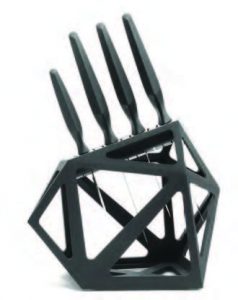



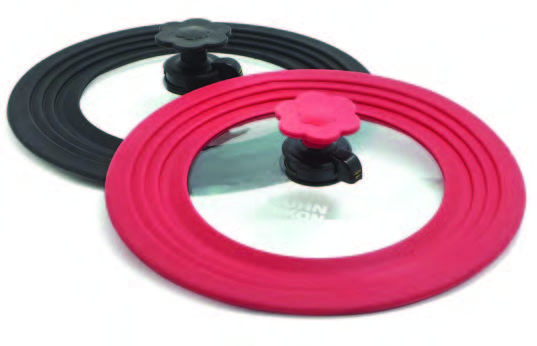
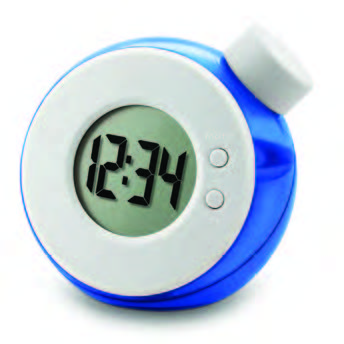

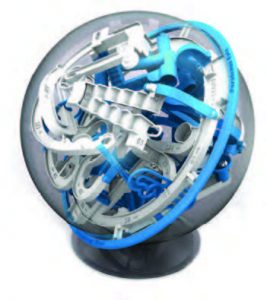
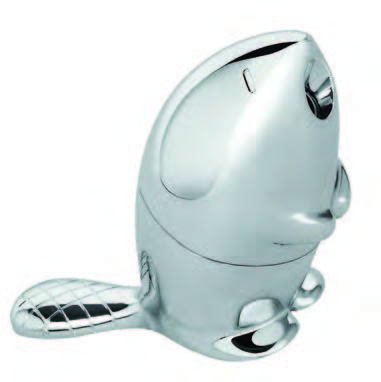





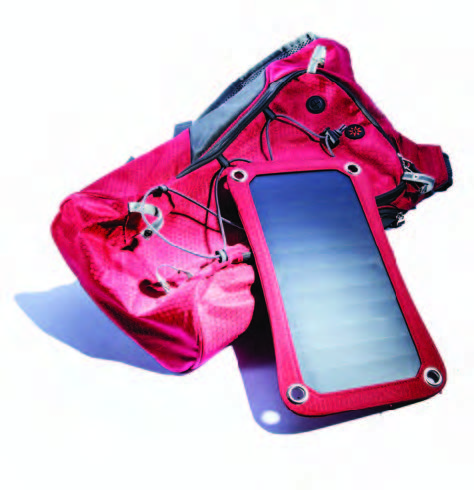






 Why it has taken more than a decade of the 21st century for Jerseyites to welcome Korea’s comfort foods to their backyards puzzles me. But after years of trekking to Fort Lee, Palisades Park and Edison, I’m grateful that Brian Kim and his parents Helen and Kenny were brave enough to bring Seoulville to at least one corner of New Jersey that lacked real-deal bibimbap.
Why it has taken more than a decade of the 21st century for Jerseyites to welcome Korea’s comfort foods to their backyards puzzles me. But after years of trekking to Fort Lee, Palisades Park and Edison, I’m grateful that Brian Kim and his parents Helen and Kenny were brave enough to bring Seoulville to at least one corner of New Jersey that lacked real-deal bibimbap. For here, the chicken wings come glazed sweet and spicy—and that do-si-do of dolce and daring isn’t sticky and cloying, but invigorating to the meat. Which is the point. The seafood and scallion pajeon, a pancake that tilts in texture to an omelet crossed with a crepe, isn’t even a tad oily, allowing the shreds of shrimp and squid to take charge. My favorite starter is the fried tofu, batter-dipped cubes with taut, crisp crusts that squirt with milkiness. Eat a cube, with or without a brush of sweet soy glaze, then check out the banchan–small bowls of vegetables and condiments, including cubed radish, sliced cucumbers, pepper-licked potatoes, marinated mungbean sprouts–and enjoy the interplay.
For here, the chicken wings come glazed sweet and spicy—and that do-si-do of dolce and daring isn’t sticky and cloying, but invigorating to the meat. Which is the point. The seafood and scallion pajeon, a pancake that tilts in texture to an omelet crossed with a crepe, isn’t even a tad oily, allowing the shreds of shrimp and squid to take charge. My favorite starter is the fried tofu, batter-dipped cubes with taut, crisp crusts that squirt with milkiness. Eat a cube, with or without a brush of sweet soy glaze, then check out the banchan–small bowls of vegetables and condiments, including cubed radish, sliced cucumbers, pepper-licked potatoes, marinated mungbean sprouts–and enjoy the interplay. For weeks after that dinner, I thought of Seoulville. Its mission to serve as a bridge between mother country authentic and suburban Jersey educational did make me a little sad, however. I kept wishing the Kims didn’t feel that need to cotton to Western palates at all. But they are in it for the long haul, definitely wanting to take locals on a culinary trip. I stopped back with a friend, ostensibly for bowls of a couple of soups I’d missed, but really to see how the little place with the big heart was doing.
For weeks after that dinner, I thought of Seoulville. Its mission to serve as a bridge between mother country authentic and suburban Jersey educational did make me a little sad, however. I kept wishing the Kims didn’t feel that need to cotton to Western palates at all. But they are in it for the long haul, definitely wanting to take locals on a culinary trip. I stopped back with a friend, ostensibly for bowls of a couple of soups I’d missed, but really to see how the little place with the big heart was doing. Seoulville, a modest but pleasant storefront with subdued décor and the most welcoming of service, could be part of the natural progression of things culinary. It might just be what the good denizens of New Jersey had to work up to. But it’s also about a carefully orchestrated menu by the Kim family and a style of cooking that’s at once educational and experimental, yet purposefully easy to digest. We’re getting there.
Seoulville, a modest but pleasant storefront with subdued décor and the most welcoming of service, could be part of the natural progression of things culinary. It might just be what the good denizens of New Jersey had to work up to. But it’s also about a carefully orchestrated menu by the Kim family and a style of cooking that’s at once educational and experimental, yet purposefully easy to digest. We’re getting there. BYOB
BYOB





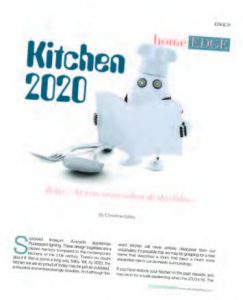 BUILDINGS & FOOD
BUILDINGS & FOOD Advances in technology have made research and development cheaper, faster, and more precise. The result is smart technology popping up in some surprising places. For instance, garage workshop tinkerers can obtain hardware like Raspberry Pi and Arduino—small computers that can be used as plug-in components in new creations. Meanwhile, 3D printers, computer-controlled routers and multiple-axis waterjets (which can cut almost any non-ceramic material) will likely soon be available at your local Lowe’s or Home Depot.
Advances in technology have made research and development cheaper, faster, and more precise. The result is smart technology popping up in some surprising places. For instance, garage workshop tinkerers can obtain hardware like Raspberry Pi and Arduino—small computers that can be used as plug-in components in new creations. Meanwhile, 3D printers, computer-controlled routers and multiple-axis waterjets (which can cut almost any non-ceramic material) will likely soon be available at your local Lowe’s or Home Depot.
 ED PROJECT ON SCHEDULE AND ON BUDGET
ED PROJECT ON SCHEDULE AND ON BUDGET  GATHER WITH US
GATHER WITH US  WINGS OVER TRINITAS
WINGS OVER TRINITAS  Schizophrenia Game-Changer?
Schizophrenia Game-Changer? 
 The Health Benefits of Equal Pay
The Health Benefits of Equal Pay 
 Screen Strain: It’s a Thing
Screen Strain: It’s a Thing  Small Wonder
Small Wonder 
 What You Don’t Know Can Hurt You
What You Don’t Know Can Hurt You  Gene-Editing Breakthrough
Gene-Editing Breakthrough 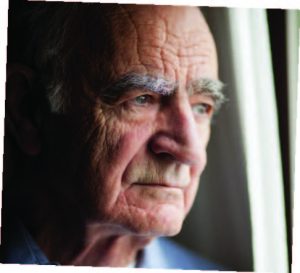 Mind & Body Connection
Mind & Body Connection 
 Martin, a Holocaust survivor, spent five years in a concentration camp in Poland. The Jewish faith is an indomitable trait of the Mintz family, and at a time of crisis they were able to find some solace in the hospital’s Bikur Cholim Room. Bikur Cholim is the Hebrew phrase for “visiting the sick,” and Martin’s family was impressed that Trinitas, a Catholic hospital, makes this accommodation available for Jewish families in need of support and a place to come together in prayer.
Martin, a Holocaust survivor, spent five years in a concentration camp in Poland. The Jewish faith is an indomitable trait of the Mintz family, and at a time of crisis they were able to find some solace in the hospital’s Bikur Cholim Room. Bikur Cholim is the Hebrew phrase for “visiting the sick,” and Martin’s family was impressed that Trinitas, a Catholic hospital, makes this accommodation available for Jewish families in need of support and a place to come together in prayer.
 NJ Sharing Network is a non-profit, federally designated organ procurement organization. It was formed three decades ago at about the same time the government passed legislation that required hospitals to present the option of donation to families of potential donors. Since then, organ donation has quadrupled in New Jersey, saving, extending or restoring countless thousands of lives. NJ Sharing Network coordinates the efforts of hospitals, transplant centers, medical examiners and funeral directors, as well as increasing public awareness through education and media outreach. The organization will be particularly busy this April, during National Donate Life Month. Schools, community groups, businesses, elected officials and, of course, hospitals around the country will be demonstrating their support of organ and tissue donation, and encouraging people to start talking about what they would do if a family member becomes a candidate for donation.
NJ Sharing Network is a non-profit, federally designated organ procurement organization. It was formed three decades ago at about the same time the government passed legislation that required hospitals to present the option of donation to families of potential donors. Since then, organ donation has quadrupled in New Jersey, saving, extending or restoring countless thousands of lives. NJ Sharing Network coordinates the efforts of hospitals, transplant centers, medical examiners and funeral directors, as well as increasing public awareness through education and media outreach. The organization will be particularly busy this April, during National Donate Life Month. Schools, community groups, businesses, elected officials and, of course, hospitals around the country will be demonstrating their support of organ and tissue donation, and encouraging people to start talking about what they would do if a family member becomes a candidate for donation. “In part because my mother had not made the decision to be an organ donor,” she explains. “We’d never had that conversation. The clock was running out and the siblings had to make a decision. That was my first encounter with NJ Sharing Network. A volunteer met with us and convinced us that this was something my mother would want to do.”
“In part because my mother had not made the decision to be an organ donor,” she explains. “We’d never had that conversation. The clock was running out and the siblings had to make a decision. That was my first encounter with NJ Sharing Network. A volunteer met with us and convinced us that this was something my mother would want to do.” 



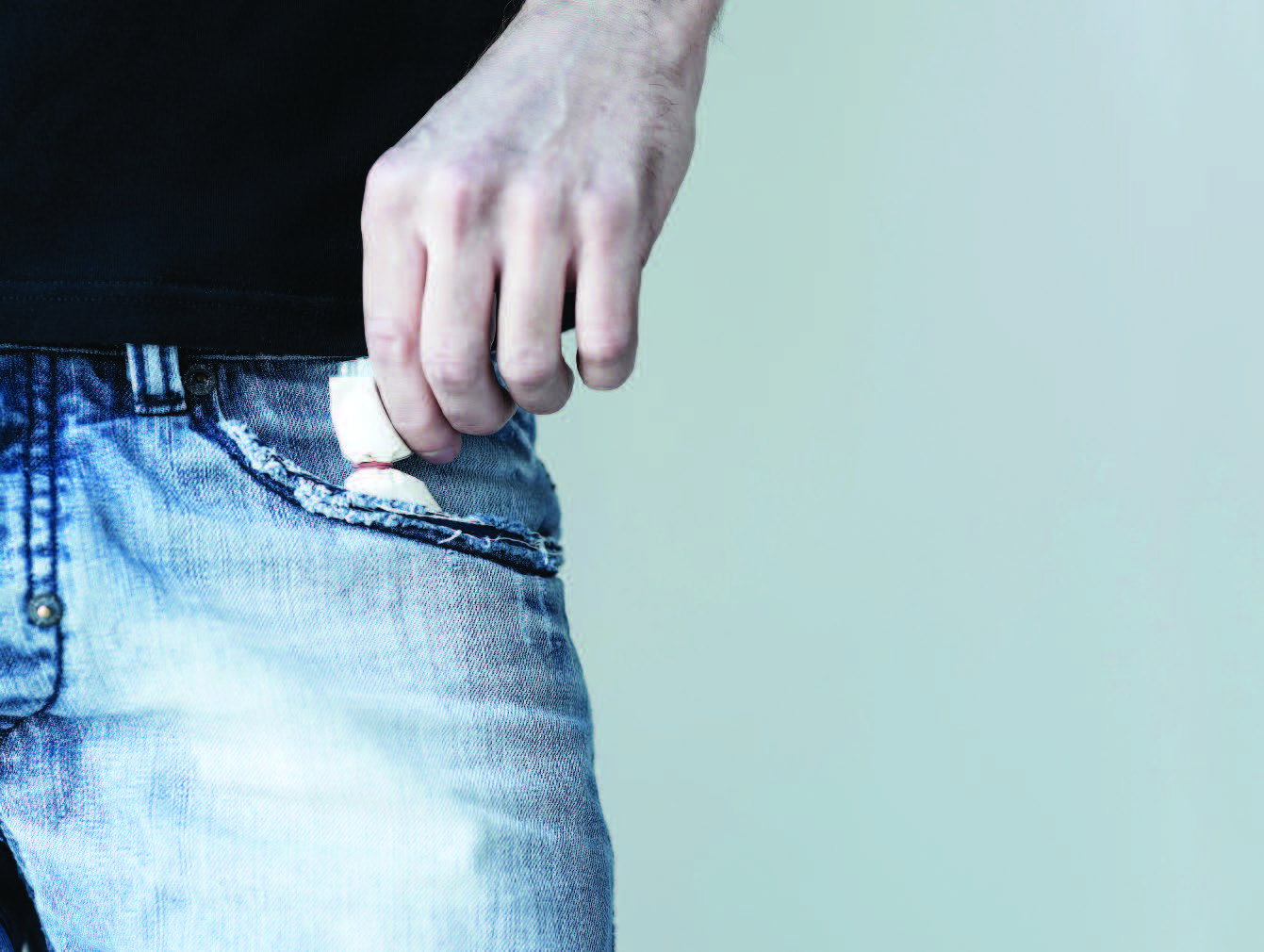




 Gadget Inspector
Gadget Inspector And it doesn’t stop there. Showers are now programmable. The RainBrain by Hansgrohe ($4,750) (right) takes total shower jet control to a whole new level, creating the equivalent of a stand-up body massage. How about a laser razor? Skarp makes a slick, minimalistic shaver that emits a powerful light to cut off your facial bristles. Its recent launch on Indiegogo (a crowdfunder for startups), raised almost $500,000 and is targeted to be available this year at $289. FitBit devotees will enjoy the Aria scale, which can be synched to a smartphone to record not only poundage, but also body fat percentage, body mass index (BMI), heart rate, and even let you know about the day’s weather forecast
And it doesn’t stop there. Showers are now programmable. The RainBrain by Hansgrohe ($4,750) (right) takes total shower jet control to a whole new level, creating the equivalent of a stand-up body massage. How about a laser razor? Skarp makes a slick, minimalistic shaver that emits a powerful light to cut off your facial bristles. Its recent launch on Indiegogo (a crowdfunder for startups), raised almost $500,000 and is targeted to be available this year at $289. FitBit devotees will enjoy the Aria scale, which can be synched to a smartphone to record not only poundage, but also body fat percentage, body mass index (BMI), heart rate, and even let you know about the day’s weather forecast n addition to the various technological bells and whistles they offer, manufacturers are also looking at the safety component of bathroom design. One of Jay Leno’s tried-and-true jokes is about how more people die each year in bathroom falls than in plane crashes (the punch line is, “Yeah, but when you fall off the toilet you’re not falling 30,000 feet!”). Still, it’s no laughing matter. According to the Centers for Disease Control and Prevention, nearly a quarter-million people over age 15 visit the ER annually as a result of a bathroom injury; 14 percent require hospitalization. Two-thirds of bathroom injuries are sustained in or near a bathtub or shower. The injury rate for women is 72 percent higher than for men. And, interestingly, you’re more than four times likelier to get hurt getting out of a tub or shower than getting in. Even if you’re not springing for the big bathroom reno, its worth doing a quick safety assessment. Look for poorly fitting shower curtains, slick tile floors, soapy tub or shower beds, antiquated or improperly installed glass shower doors, area rugs without non-slip backing, and space heaters. These are items worth an immediate upgrade.
n addition to the various technological bells and whistles they offer, manufacturers are also looking at the safety component of bathroom design. One of Jay Leno’s tried-and-true jokes is about how more people die each year in bathroom falls than in plane crashes (the punch line is, “Yeah, but when you fall off the toilet you’re not falling 30,000 feet!”). Still, it’s no laughing matter. According to the Centers for Disease Control and Prevention, nearly a quarter-million people over age 15 visit the ER annually as a result of a bathroom injury; 14 percent require hospitalization. Two-thirds of bathroom injuries are sustained in or near a bathtub or shower. The injury rate for women is 72 percent higher than for men. And, interestingly, you’re more than four times likelier to get hurt getting out of a tub or shower than getting in. Even if you’re not springing for the big bathroom reno, its worth doing a quick safety assessment. Look for poorly fitting shower curtains, slick tile floors, soapy tub or shower beds, antiquated or improperly installed glass shower doors, area rugs without non-slip backing, and space heaters. These are items worth an immediate upgrade. A LITTLE BUDGET CONSCIOUS
A LITTLE BUDGET CONSCIOUS 







 Uncle Momo, a French-Lebanese bistro a few blocks away, has a bountiful brunch menu (as well as lunch and dinner). Owner and chef Wissam Elmasri, who is Lebanese and attended culinary school in France, serves a mix of American, French and Middle Eastern fare. The crepes, made from quinoa, are light and airy. The most unusual is Zeit W Zaatar, made with labne (yogurt cheese), cucumbers and olives, all seasoned with dried thyme. My two favorites—spinach & goat cheese and smoked salmon & spinach—are delicately flavored and topped with greens. Ruby red pomegranate seeds give the salad an unexpected zing.
Uncle Momo, a French-Lebanese bistro a few blocks away, has a bountiful brunch menu (as well as lunch and dinner). Owner and chef Wissam Elmasri, who is Lebanese and attended culinary school in France, serves a mix of American, French and Middle Eastern fare. The crepes, made from quinoa, are light and airy. The most unusual is Zeit W Zaatar, made with labne (yogurt cheese), cucumbers and olives, all seasoned with dried thyme. My two favorites—spinach & goat cheese and smoked salmon & spinach—are delicately flavored and topped with greens. Ruby red pomegranate seeds give the salad an unexpected zing. Ani Ramen, a trendy Japanese noodle house that opened in 2014, is a good place for lunch, snack or a casual dinner. Its success is not surprising, given that owner Luck Sarabhayavanija and his team tried hundreds of combinations of noodles and broth before settling on a menu. The result: A half-dozen ramens to showcase and about 20 more in the mix. “We have a simple chicken broth, a more complex miso, a brothless ramen with intense flavor, a wonderful vegetarian—our hidden gem—and our signature rich and creamy pork broth,” he says.
Ani Ramen, a trendy Japanese noodle house that opened in 2014, is a good place for lunch, snack or a casual dinner. Its success is not surprising, given that owner Luck Sarabhayavanija and his team tried hundreds of combinations of noodles and broth before settling on a menu. The result: A half-dozen ramens to showcase and about 20 more in the mix. “We have a simple chicken broth, a more complex miso, a brothless ramen with intense flavor, a wonderful vegetarian—our hidden gem—and our signature rich and creamy pork broth,” he says.  Mesob, where the food cries out for sharing. It arrives on a pizza-sized communal platter, to be eaten not with fork or spoon but with injera, the spongy flatbread that doubles as an eating implement in Ethiopia. Friendly waiters keep replenishing your supply as long as there’s food left to be scooped up. Order carefully here. My husband and I often ask for chicken and lamb tibs—marinated and sautéed with onions, garlic and jalapenos—prepared “between mild and medium,” but which is quite spicy. If you prefer food with little or no heat, select dishes marked “mild.” Each entrée comes with two sides. Misia wat (spicy lentils) and kik aletcha (yellow split peas) are among my favorites.
Mesob, where the food cries out for sharing. It arrives on a pizza-sized communal platter, to be eaten not with fork or spoon but with injera, the spongy flatbread that doubles as an eating implement in Ethiopia. Friendly waiters keep replenishing your supply as long as there’s food left to be scooped up. Order carefully here. My husband and I often ask for chicken and lamb tibs—marinated and sautéed with onions, garlic and jalapenos—prepared “between mild and medium,” but which is quite spicy. If you prefer food with little or no heat, select dishes marked “mild.” Each entrée comes with two sides. Misia wat (spicy lentils) and kik aletcha (yellow split peas) are among my favorites.  Costanera, a Peruvian restaurant whose owner/chef, Juan Placenia, was born in Lima but moved here when he was a tot, is two doors away. He graduated from the Culinary Institute of America, and everything I’ve eaten here—even the humble rotisserie chicken—has been top-notch. That
Costanera, a Peruvian restaurant whose owner/chef, Juan Placenia, was born in Lima but moved here when he was a tot, is two doors away. He graduated from the Culinary Institute of America, and everything I’ve eaten here—even the humble rotisserie chicken—has been top-notch. That  If you love Paris—and who doesn’t?—save room for dessert at Le Petit Parisien. Crepes, salads and sandwiches are also served here, but the macarons, pastries and croissants create the biggest buzz. Macarons come in many flavors and hues, including raspberry,
If you love Paris—and who doesn’t?—save room for dessert at Le Petit Parisien. Crepes, salads and sandwiches are also served here, but the macarons, pastries and croissants create the biggest buzz. Macarons come in many flavors and hues, including raspberry, 
 Paragon Tap & Table • Pan Seared Mahi Mahi
Paragon Tap & Table • Pan Seared Mahi Mahi  A Toute Heure/100 Steps Supper Club & Raw Bar
A Toute Heure/100 Steps Supper Club & Raw Bar BoulevardFive72 • Grilled “Chermoula” Organic Salmon
BoulevardFive72 • Grilled “Chermoula” Organic Salmon Arirang Hibachi Steakhouse • Wasabi Crusted Filet Mignon
Arirang Hibachi Steakhouse • Wasabi Crusted Filet Mignon  Daimatsu • Sushi Pizza
Daimatsu • Sushi Pizza Publick House • Kobe Short Rib
Publick House • Kobe Short Rib  Luciano’s Ristorante & Lounge • House Made Mafalda Pasta Inverno Style
Luciano’s Ristorante & Lounge • House Made Mafalda Pasta Inverno Style  Morris Tap & Grill • BBQ Braised Pork Shank with Corn Hash
Morris Tap & Grill • BBQ Braised Pork Shank with Corn Hash Thai Amarin • Goong Ma Kham
Thai Amarin • Goong Ma Kham  Spirit: Social Eatery and Bar • Jersey Breakfast Bar Pie
Spirit: Social Eatery and Bar • Jersey Breakfast Bar Pie Arirang Hibachi Steakhouse • Volcano Roll
Arirang Hibachi Steakhouse • Volcano Roll  The Manor • Petite Filet Mignon & Short Ribs
The Manor • Petite Filet Mignon & Short Ribs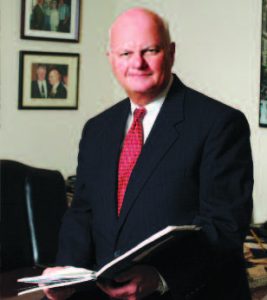 POWER PLAYER
POWER PLAYER  A NAME KNOWN ‘ROUND THE WORLD
A NAME KNOWN ‘ROUND THE WORLD  SHE’S NOTEWORTHY!
SHE’S NOTEWORTHY!  NEW NURSING LEADER
NEW NURSING LEADER 

 GARY HORAN INTERVIEWED ON NPR
GARY HORAN INTERVIEWED ON NPR  MILES OF SMILES
MILES OF SMILES  Raw Milk: Coming Soon to NJ?
Raw Milk: Coming Soon to NJ? 
 Almond Joy
Almond Joy 
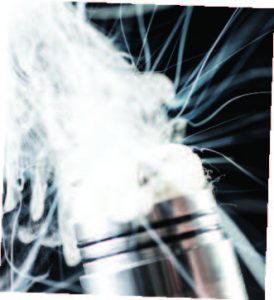
 Connection Between Autism and Early Death
Connection Between Autism and Early Death 
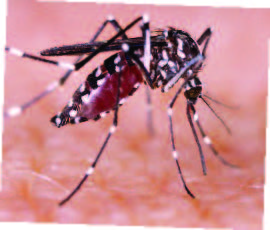

 Fish Warning For Mothers-To-Be
Fish Warning For Mothers-To-Be 
 Going Gray
Going Gray